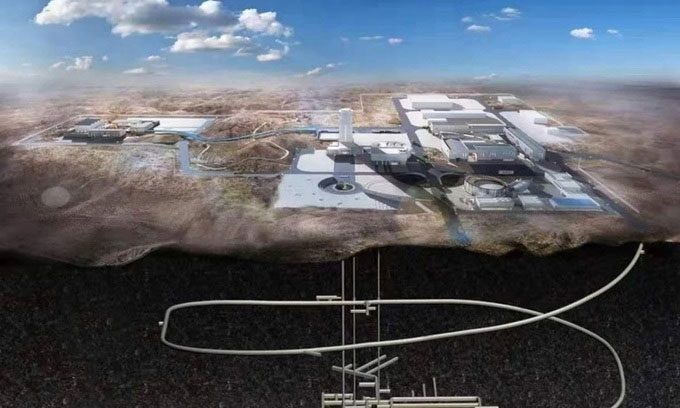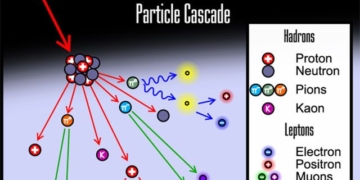China Constructs Underground Laboratory Beneath the Gobi Desert to Identify Suitable Nuclear Waste Disposal Sites
The Beishan Underground Research Laboratory in Gansu Province will be used to study the long-term storage of high-level radioactive waste. With its deepest level located 560 meters underground, this will be the largest laboratory of its kind, according to the China Nuclear Energy Association.

Design of the laboratory beneath the Gobi Desert. (Photo: SCMP).
The world has approximately 250,000 tons of high-level radioactive waste, all of which is temporarily stored. No country has yet found a permanent underground storage solution due to opposition from communities. China’s efforts to find a solution come at a time when the country plans to build a series of new reactors. Managing high-level nuclear waste is becoming increasingly important as China utilizes more nuclear energy and strives to achieve carbon neutrality.
China aims to expand its nuclear capacity by about 40% by 2025 from the levels at the end of 2020. Currently, nuclear energy accounts for about 5% of China’s total electricity generation.
The laboratory is estimated to cost over $400 million, take seven years to build, and could operate for 50 years. If research indicates that the area is suitable, a high-level nuclear waste repository will be constructed nearby by 2050, according to Wang Ju, the design chief of the laboratory.
Nuclear waste can be divided into three categories based on radiation levels: The low-level group includes radioactive materials used in nuclear power plants. The intermediate group contains waste with higher radiation levels, such as used reactor components. These two groups account for about 99% of nuclear waste.
China has three disposal sites for intermediate and low-level waste, located in Gansu, Guangdong Province in the south, and Sichuan Province in the southwest. The upcoming goal is to establish five additional sites in coastal provinces with nuclear power plants, such as Zhejiang, Fujian, and Shandong. High-level radioactive waste consists of spent nuclear fuel, and the safest disposal method is permanent burial deep underground.
The world’s first underground repository for spent fuel is being constructed in Finland, expected to begin operations in 2023. The total estimated cost is around $3.1 billion, according to the Finnish Radiation and Nuclear Safety Authority. A nuclear energy expert noted that China’s laboratory is significant as it aims for a closed fuel cycle.
“The idea of a closed fuel cycle is to recycle fuel by breaking down waste, making it less hazardous and extracting valuable components such as uranium, plutonium, and some fission products that can be useful in industrial applications,” said David Fishman, a manager at the energy consultancy firm The Lantau Group.
China operates a pilot recycling plant in Gansu with an annual processing capacity of 200 tons of uranium, according to the International Atomic Energy Agency. In 2018, China and France signed an agreement to build a processing and recycling plant worth nearly $12 billion.



















































